The Best Baking Soda Face Mask Remedies
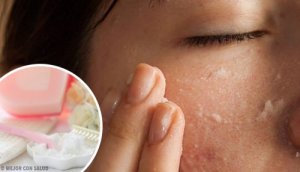
Baking soda is an essential in every home. It has so many uses, and you never know when it might get you out of a jam.
Whether for cleaning or for health and beauty, make sure you always keep this product on hand.
So, in the following article, we’ll tell you about the best baking soda face mask recipes that you can make at home.
Uses of baking soda for beauty treatment
Baking soda has so many uses when it comes to health and beauty. Among other things, it can be used as an exfoliator, an antibacterial, and an antiseptic.
In this next section, we’ll tell you more about the benefits of using baking soda on your skin (especially on the face). These include:
1. Baking soda as a cleanser
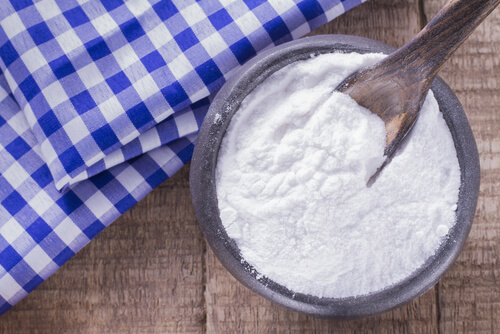
Every day your face is exposed to environmental pollution, the sun’s rays, toxins, dust, and other harmful substances.
If you don’t wash it at night, all that dirt builds up and causes spots, loss of elasticity, or large pores.
- Baking soda can help cleanse your skin. Thanks to its antiseptic and antibacterial properties, it can help to eliminate bacteria and remove toxic elements from the face, as shown in this study by the Semmelweis University in Hungria.
2. Prevent spots
Acne doesn’t just affect teenagers. If we don’t take care of our skin properly, spots will soon appear. However, there is no scientific evidence to support the idea that baking soda could prevent acne. If you’re suffering from acne, it’s best to consult with a dermatologist.
3. Prevent blemishes
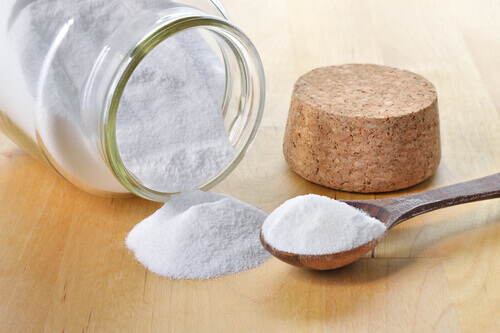
It’s believed that baking soda can also help if you have blemishes caused by the sun, ageing, or waxing. Likewise, however, there is no scientific evidence to support this claim.
4. Moisturizer
When you mix baking soda with honey, argon oil, or olive oil, you get an ideal moisturizing mask.
- This mixture contains vitamins and essential fatty acids. According to a study carried out by the University of La Frontera (Chile), honey has healing properties. Furthermore, according to this investigation by the University of Chang Gung in Taiwan, olive oil has anti-inflammatory and skin repair effects.
5. Antiseptic and anti-inflammatory
Because it can cause redness, irritation, and dryness, baking soda is not recommended for very sensitive skin.
However, it does act as a powerful antiseptic, which is ideal for any spots that become infected. This has been confirmed by a study carried out by the University of Las Americas in Ecuador.
- It can also be useful if your skin has become inflamed due to an allergy or exposure to the sun.
6. Economical
As well as being simple to use, baking soda is very affordable and easy to find in stores.
- In just a few minutes you can make an effective baking soda face mask without having to resort to expensive treatments in a beauty salon.
The best baking soda face mask recipes
You can test if your skin reacts well to baking soda by rubbing a little on the back of your hand in a circular movement.
- Wait a few minutes, pay close attention and look out for any redness, irritation, burning, or any other symptoms.
- If nothing like that appears, you can safely use baking soda with no side effects.
1. Baking soda face mask for oily skin
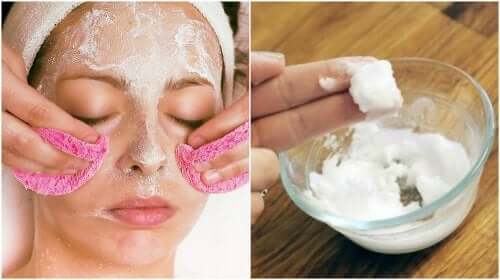
This treatment works to exfoliate, moisturize and regenerate the skin. The ingredients are easy to get hold of, and preparation only takes a few minutes.
Ingredients
- 3 tbsp of baking soda (30g).
- 3 tbsp of mineral water (30ml).
- The juice of ½ lemon.
- 4 drops of olive oil, almond oil, or lavender oil.
Preparation
- Tip the baking soda in a bowl.
- Slowly pour in the water, stirring to make a paste.
- Squeeze the lemon and add the juice to the paste.
- Finally, pour in 4 drops of the essential oil of your choice.
Application
- Wash your face with warm water and gently pat dry with a towel.
- Spread the paste all over your face with circular movements (avoiding the area around your eyes).
- If you notice a little stinging in places, don’t worry, it’s quite normal.
- Leave the mask on for 20 minutes and then remove with plenty of warm water.
2. Baking soda face mask for dry skin
This recipe is similar to the previous one but, instead of lemon, it contains honey.
Ingredients
- 3 tbsp of baking soda (30g).
- 3 tbsp of mineral water (30ml).
- 1 tbsp of honey (25g).
- 4 drops of olive oil, almond oil, or lavender oil.
Preparation
- Tip the baking soda into a bowl and gradually add the water.
- Once you’ve created a smooth paste, add the honey (it’s better if it’s liquid honey).
- Add your preferred essential oil and stir.
Application
- With your face clean and moderately dry, apply the paste very gently to avoid irritating your skin.
- Leave it for 15 minutes and remove with warm water.
- If you notice that your skin is a little dry you can apply a moisturizer (the one you usually use) or a couple of drops of any essential oil.
3. Baking soda face mask with chamomile
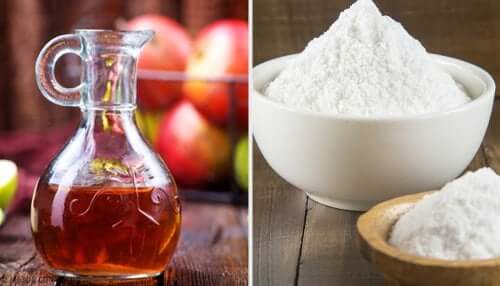
This facial exfoliator is very effective and can be done at home easily. When you have a free afternoon, be sure to take advantage of the benefits of its ingredients.
Ingredients
- 1 chamomile teabag.
- ½ cup of water (125ml).
- 2 tbsp of rolled oats (20g).
- 1 tbsp of honey (25g).
- 2 tbsp of baking soda (20 g).
Preparation
- Prepare the chamomile tea as normal.
- Leave it to stand.
- Meanwhile, grind the rolled oats with the help of a pestle and mortar, a food processor, or a spoon.
- Put the baking soda, honey and oats in a bowl. Mix well.
- Remove the tea bag and add the tea, little by little, to the mixture.
- If the paste is too thin, you can add more baking soda.
Application
- Wash your face well and apply the paste generously, especially over the areas where grease and dirt accumulate: the nose, forehead and cheeks.
- Leave it on for 20 minutes and rinse with warm water.
- When you’ve finished, apply a moisturizer.
- Repeat this treatment once a week.
The results of these face masks may surprise you. Don’t forget to do a patch test on the back of your hand so you can use them safely and with complete peace of mind.
All cited sources were thoroughly reviewed by our team to ensure their quality, reliability, currency, and validity. The bibliography of this article was considered reliable and of academic or scientific accuracy.
- Moro, A. (2011). Las increíbles propiedades del bicarbonato de sodio.
- Romero, X., Navarro, P., & Noguera, J. (2005). Acidez y pH. Escuela Venezolana para la Enseñanza Química.
- Ulate, D. (2011). El acné en los adolescentes. Adolescencia y Salud.
- Fonseca Capdevila, E. (2014). Tratamiento del acné juvenil. Piel. https://doi.org/10.1016/j.piel.2014.01.016
This text is provided for informational purposes only and does not replace consultation with a professional. If in doubt, consult your specialist.








